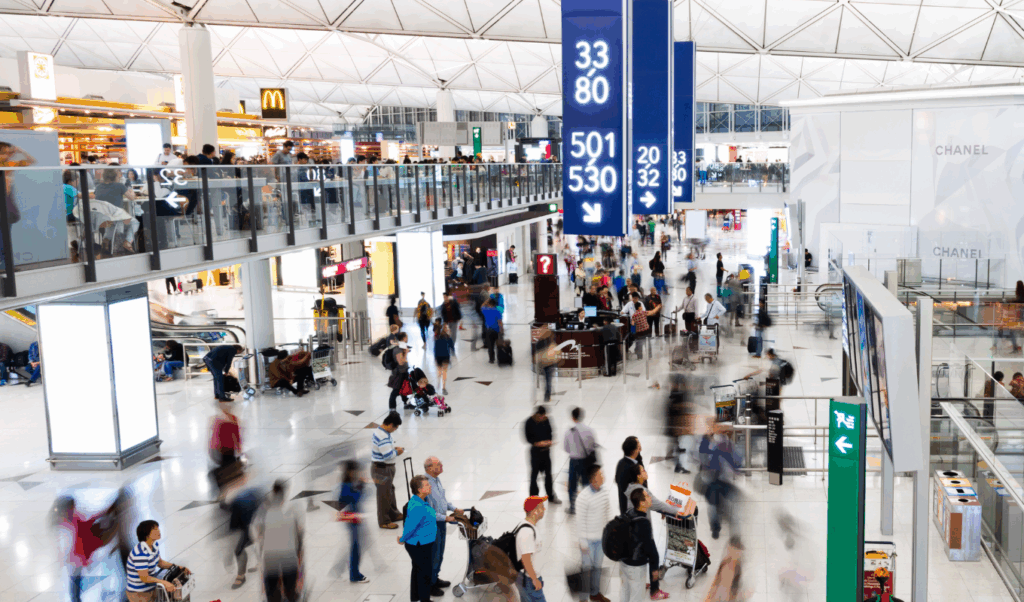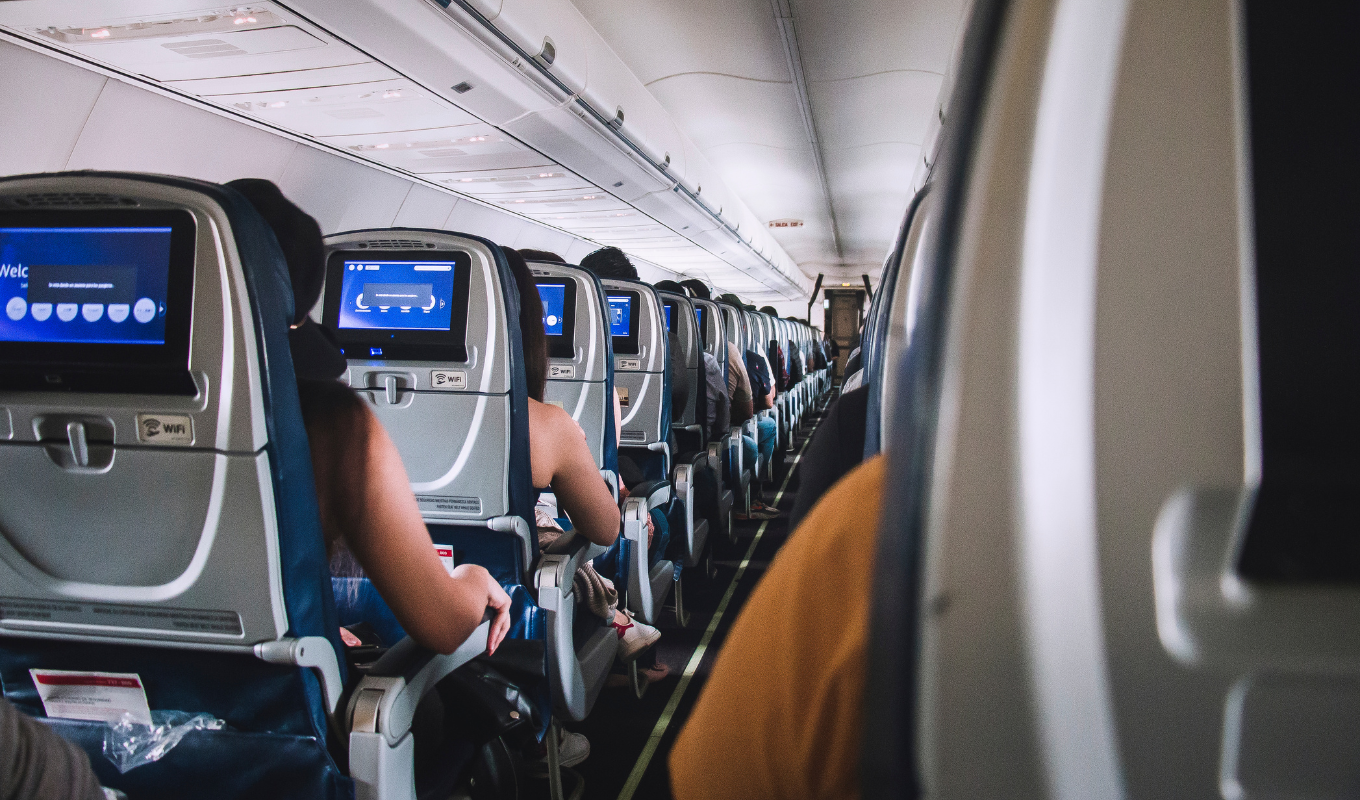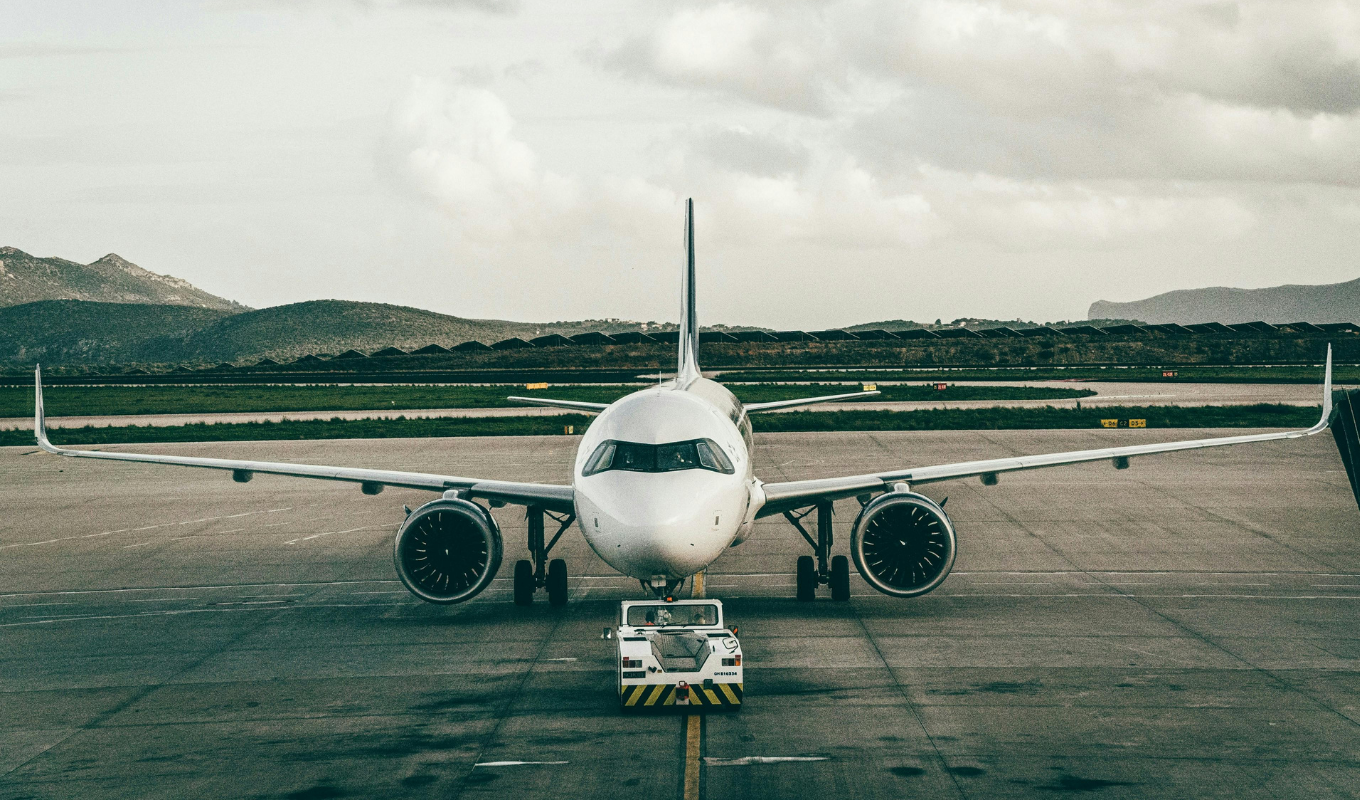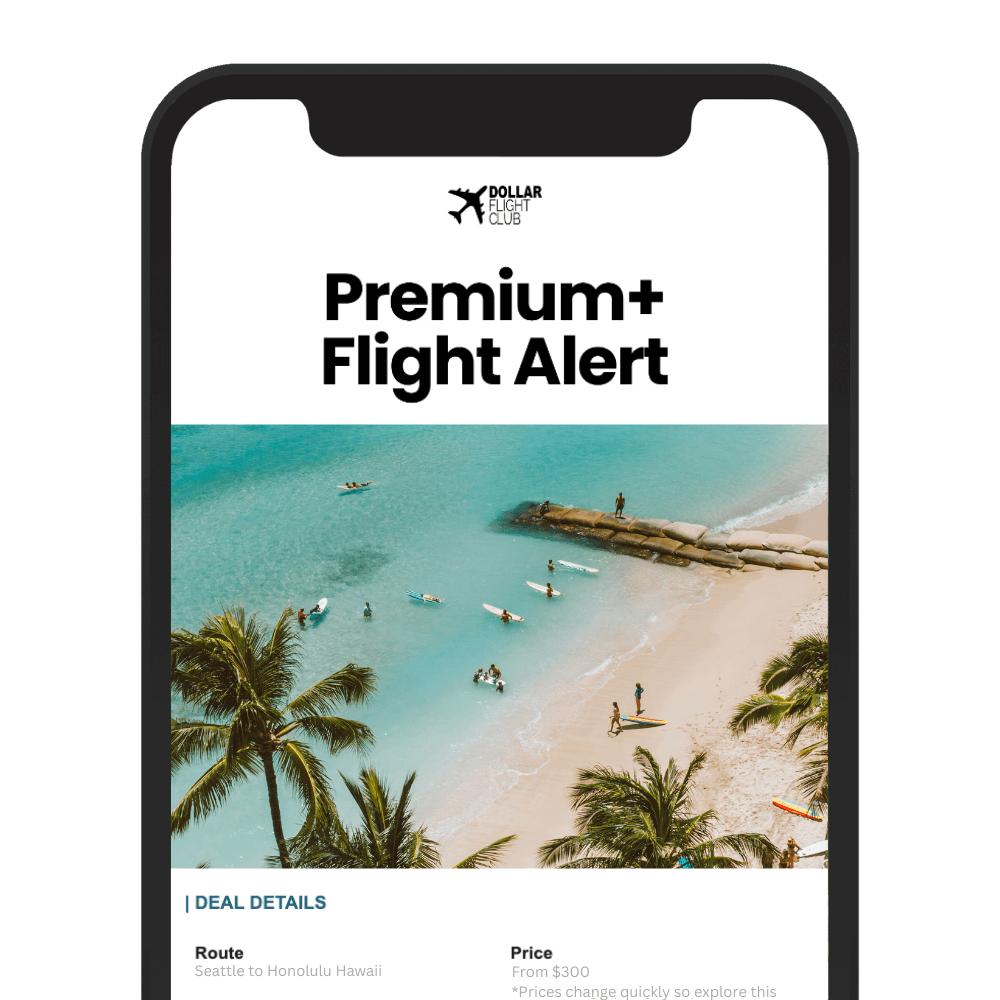Airline ticket prices are unpredictable because they rely on real-time algorithms that adjust fares based on demand, competition, and even your location. A single seat’s price can change up to 35 times before the flight departs, and factors like holidays or major events can cause prices to spike by 25–50%.
Here’s what affects your airfare and how to save:
- Dynamic Pricing: Airlines use AI to constantly tweak prices, tracking factors like booking trends and competitor rates.
- Booking Timing: For domestic flights, book 1–3 months in advance; for international, aim for 3–6 months. Sundays often offer cheaper rates.
- Flexibility: Flying midweek, choosing alternate airports, or using flexible date tools can save up to 27%.
- Location Pricing: Your IP address can influence fares – using a VPN might reveal lower prices.
- Tools to Save: Services like Dollar Flight Club help you find mistake fares and hidden deals, saving up to 90% on flights.
How Airlines Use Dynamic Pricing to Set Fares
Airlines have turned ticket pricing into a sophisticated operation that goes far beyond basic supply and demand. Their dynamic pricing systems adjust fares in real-time, drawing on a wide range of factors to squeeze the maximum revenue out of each seat.
How Pricing Algorithms Work
Modern airline pricing relies on advanced algorithms that crunch massive amounts of data every few minutes. These systems evaluate everything from current booking trends and competitor pricing to local events that might drive demand for travel.
Unlike older, rule-based systems, today’s AI-powered algorithms adapt in real-time, using live market data and learning from previous pricing decisions. This constant feedback loop helps refine their accuracy over time.
These algorithms handle thousands of data points at once. For example, flight demand can spike by as much as 40% due to events alone. The financial stakes are enormous – a McKinsey report estimates that AI-driven pricing strategies could add up to $4.4 trillion in annual profits across industries.
To stay competitive, airlines are pouring resources into upgrading their pricing systems. This includes expanding revenue management teams, modernizing reservation platforms, and developing advanced tools that support decision-making. These tools also track competitors’ pricing in real time, allowing airlines to quickly adjust their fares, which explains the constant fluctuations travelers often see.
This technological backbone enables airlines to implement fare structures that cater to different types of travelers, ensuring they capture as much demand as possible.
Booking Classes and How Airlines Manage Inventory
Airlines don’t set a single price for each seat. Instead, they use a layered pricing system called fare buckets, designed to maximize revenue by targeting different customer segments. This approach, known as the nested booking policy, groups fares based on factors like demand and how many seats have already been sold at specific price points.
This structure allows airlines to cater to a variety of travelers. For instance, business travelers who book last-minute often end up in higher-priced fare buckets, while leisure travelers planning months in advance can secure lower fares. Airlines also overbook flights to account for cancellations or no-shows, which helps them fill planes and reduce revenue loss. Interestingly, only about 0.06% of passengers are bumped each year because of this strategy.
To further minimize losses, airlines manage “spill,” which happens when they can’t accommodate all passengers wanting to book. By prioritizing higher-paying customers, they maximize profitability while pushing lower-paying travelers into this overflow category.
The future of airline pricing is moving toward even greater personalization. Rather than sticking to fixed fare categories, airlines are developing systems that tailor prices to individual travelers based on their specific needs and booking habits. This means two passengers sitting next to each other might pay vastly different amounts for the same flight, depending on their profiles.
Machine learning and AI are driving these changes, enabling airlines to experiment with even more precise pricing strategies. Upcoming innovations could include real-time bidding for seats, personalized offers using biometric data, and integration with IoT devices to refine pricing further.
This intricate fare system explains why ticket prices can vary so widely, setting the stage for a deeper dive into the factors that influence your airfare in the next sections.

What Really Affects Your Ticket Price
While airline pricing algorithms are famously complex, several clear factors directly influence the cost of your ticket. Knowing what drives these changes can help you make smarter decisions and avoid overpaying.
When Demand Spikes, Prices Follow
Airfares tend to soar during high-demand periods like holidays, summer vacations, or major events. During these times, ticket prices can jump by 25–50% compared to off-peak rates. For instance, international flights to and from the United States typically become 15–20% more expensive starting in May, especially after Labor Day.
The reasoning is simple: limited seats and heightened competition allow airlines to charge more. Big events can make this even worse. Flight demand can spike by as much as 40% when a major event is happening.
Does Your Search History Affect Prices?
One of the most persistent myths in air travel is that airlines monitor your search history and raise prices if you repeatedly check for the same flight.
In reality, ticket prices fluctuate constantly across various platforms, sometimes changing by the second. Real-world tests back this up. One founder searched for the same flight 100 times in an hour and saw no price increase. While your browsing habits don’t affect pricing, your location might.
How Your Location Can Change Your Fare
Unlike the search history myth, location-based pricing is a genuine practice that can significantly alter what you pay. Airlines use digital data, such as your IP address, ZIP code, and network connection, to adjust fares. This method, often called surveillance pricing, factors in personal data like browsing habits, location, or income levels to determine prices for individual users.
The financial impact of this strategy is notable. For example, Finnair saw a 3% revenue boost by adopting dynamic pricing, while another major airline reported a 6% increase after implementing AI-driven pricing models.
Here’s an example: a test on Skyscanner showed that using a VPN in Dallas, TX, quoted $417 for a New York to London flight, while connecting through a London-based server brought the price down to about $370. Airlines may also assume travelers from wealthier regions can afford higher fares, leading to location-based price hikes. Additionally, premium device users – like those on iPhones or MacBooks – might see higher ticket prices.

How to Find Cheaper Flights
Understanding how airlines price their tickets can help you find the best deals. By knowing when to book and staying flexible, you can avoid overpaying for your next trip.
When to Book Early vs. Wait for Last-Minute Deals
Timing is everything when it comes to booking flights. For domestic trips, booking one to three months in advance can save you about 25% compared to waiting until the last minute. For international travel, aim to book three to six months ahead to snag the best prices.
The day of the week you book also plays a role. Domestic travelers save around 6% by booking on Sundays instead of Mondays or Fridays. For international flights, Sunday bookings can save you up to 17%. This trend happens because fewer people are searching for flights on weekends, which reduces competition. Use this knowledge to time your bookings wisely and avoid unnecessary price hikes.
How Being Flexible Saves You Money
Flexibility can be your secret weapon for finding cheaper flights. Travelers who use flexible date search tools save an average of 27% on their bookings.
During busy travel periods, such as holidays, midweek savings can climb even higher – sometimes exceeding $100 per ticket. Saturdays also tend to be cheaper, with domestic fares averaging about 17% less than Sunday flights.
In addition to adjusting your travel dates, consider flying out of alternative airports or booking multi-city trips. Tools like Skyscanner’s “Whole Month” feature let you compare prices across a range of dates to find the cheapest options.
Set Up Price Alerts
Flexibility is important, but keeping an eye on prices can make a big difference too. Apps and websites like Google Flights, Hopper, Skyscanner, and Kayak let you set up alerts to track price drops automatically.

Tools and Services That Help You Save Money
Beyond basic price alerts, some specialized services take your savings game to the next level. While price alerts are helpful, services like Dollar Flight Club go a step further, uncovering hidden flight deals that standard search engines often miss.
Dollar Flight Club: Alerts for Unbeatable Flight Deals
With a community of over 3,000,000 members, Dollar Flight Club has reportedly saved travelers more than $50 million on flights to over 500 destinations. Members can save up to 90% off flights and shave an average of $500 off per ticket.
How does it work? The platform sends alerts for deeply discounted flights departing from your selected airport. Unlike regular search engines, Dollar Flight Club actively hunts for mistake fares, unpublished deals, and limited-time airline promotions that aren’t widely advertised.
Experts highlight that these services provide deal notifications across all travel classes, helping you save on both economy and premium options.
To suit different travel needs and budgets, Dollar Flight Club offers three membership plans:
| Plan | Price | Key Features | Best For |
|---|---|---|---|
| Basic | Free | Daily newsletter, domestic flights, 1–3 weekly deals, 1 departure airport | Occasional domestic travelers |
| Premium | $69/year | International flights, up to 4 departure airports, 10 dream destinations, mistake fares | Regular international travelers |
| Premium+ | $99/year | Business class deals, SMS alerts, $1,000+ in travel perks, priority support | Frequent travelers seeking premium options |
One of the standout features is the ability to choose up to 10 “dream destinations”, which the service prioritizes when searching for deals.
Premium+ members enjoy even more perks through partnerships with travel brands. These include discounts on services like Priority Pass lounge access, TSA PreCheck, and travel gear from brands such as Travelpro and Tortuga.
Dollar Flight Club has earned praise from major travel publications for its money-saving potential. Forbes noted, “A great paid service is Dollar Flight Club, which boasts an impressive average of $500 saved per ticket.” Similarly, The Points Guy shared, “We use Dollar Flight Club’s deal alerts as a resource… and we’ve found them to be a solid service that sends out plenty of international flight deals curated to just the departure airports you want”.
Travel blogger Danielle Desir Corbett summed it up perfectly: “All it takes is one deal. All I need to do is book one flight and get those savings, and that flight subscription paid for itself”. Many users echo this sentiment, finding that a single discounted flight can offset the cost of an annual membership.
To make the most of this service, enable push notifications and frequently check the deals section – many of the best discounts are fleeting.
For those who are flexible with travel dates and destinations, Dollar Flight Club can completely change how you book flights. By letting deals guide your plans, you can unlock significant savings and embark on unexpected adventures.

Conclusion: How to Beat Airline Pricing Games
Understanding airline pricing isn’t just about scoring a good deal – it’s about taking charge of your travel budget.
Being flexible with your travel plans can make a huge difference. Adjusting your dates, times, or even destinations can cut costs by 10–50%. Airlines know that business travelers or those with rigid schedules are willing to pay more, leaving flexible travelers with the opportunity to snag better deals.
Timing is everything when booking flights. For domestic trips, aim for 1–3 months in advance, and for international travel, book 2–8 months ahead. This helps you avoid the steep price hikes that occur closer to departure. Small strategies can also lead to big savings. Clear your cookies, opt for weekday or early morning flights, and consider flights with layovers or departing from alternate airports – these choices can reduce fares by as much as 30%.
Pairing these tips with smart tools can take your savings to the next level. Services like Dollar Flight Club specialize in tracking mistake fares, hidden deals, and flash promotions that standard search engines often overlook. With their affordable membership fees, even a single discounted flight can cover the cost of joining.
FAQs
Can using a VPN help me find cheaper flights?
Using a VPN can occasionally help you snag cheaper flights by hiding your actual location. Airlines often use dynamic pricing, which adjusts fares based on your browsing location. This means ticket prices might vary depending on your country or region. By switching your virtual location with a VPN, you might uncover lower fares.
That said, this trick doesn’t always work. It’s hit-or-miss, so while it’s worth a shot, don’t rely on it as a foolproof way to save money. To maximize your chances of finding a bargain, pair this tactic with other methods, like booking during off-peak times or using fare alert tools to track discounts.
What is dynamic pricing and how does it impact airline ticket costs?
Dynamic pricing is a method airlines rely on to tweak ticket prices in real time, based on factors like demand, search patterns, and market trends. In simple terms, the cost of a flight can fluctuate constantly – rising during busy travel seasons or when demand surges, and dropping when fewer people are booking.
This strategy helps airlines boost revenue by adjusting prices to match varying customer needs and circumstances. For travelers, it means airfare can be unpredictable, but knowing how these patterns work might just help you snag a great deal on your next flight.
When is the best time to book flights to save money?
For the best deals on airfare, consider booking your flights on Tuesdays or Wednesdays – these days often feature lower prices. Flying midweek is generally more budget-friendly compared to weekend travel, so it’s worth adjusting your schedule if possible.
When it comes to timing, plan ahead. For domestic flights, aim to book 1–2 months in advance, while international trips should be secured at least 3 months prior. Ticket prices tend to climb as the departure date gets closer, especially during the final three weeks. By locking in your plans early and opting for midweek travel, you’ll have a better shot at snagging a bargain.










